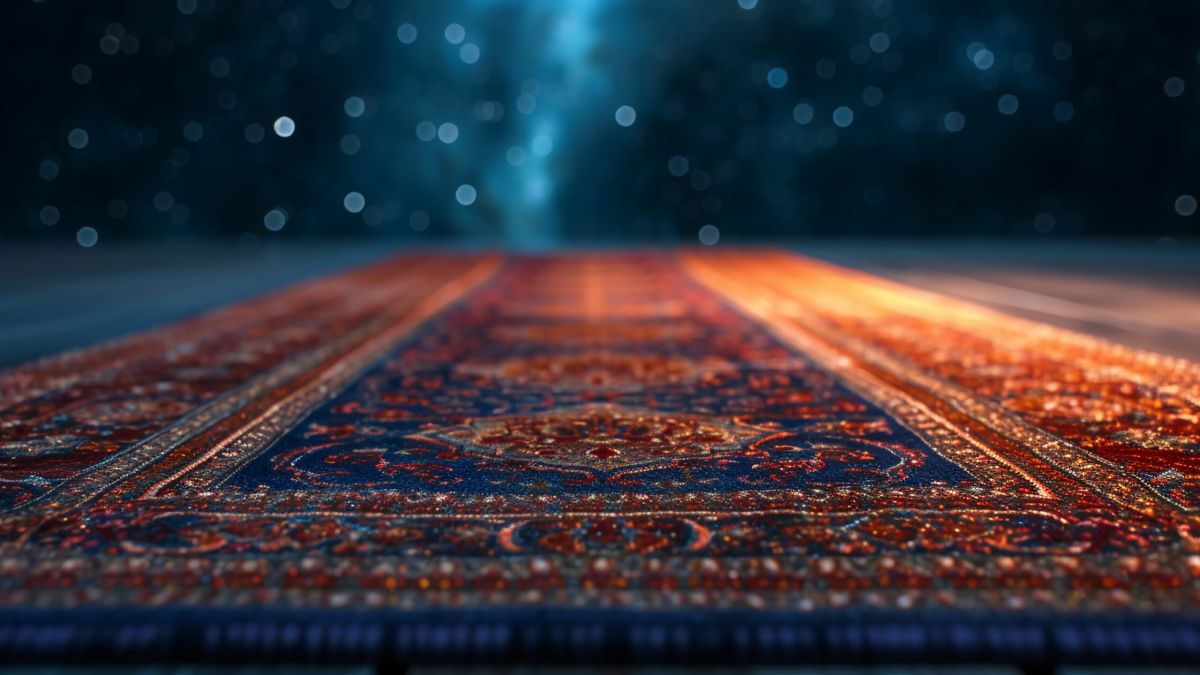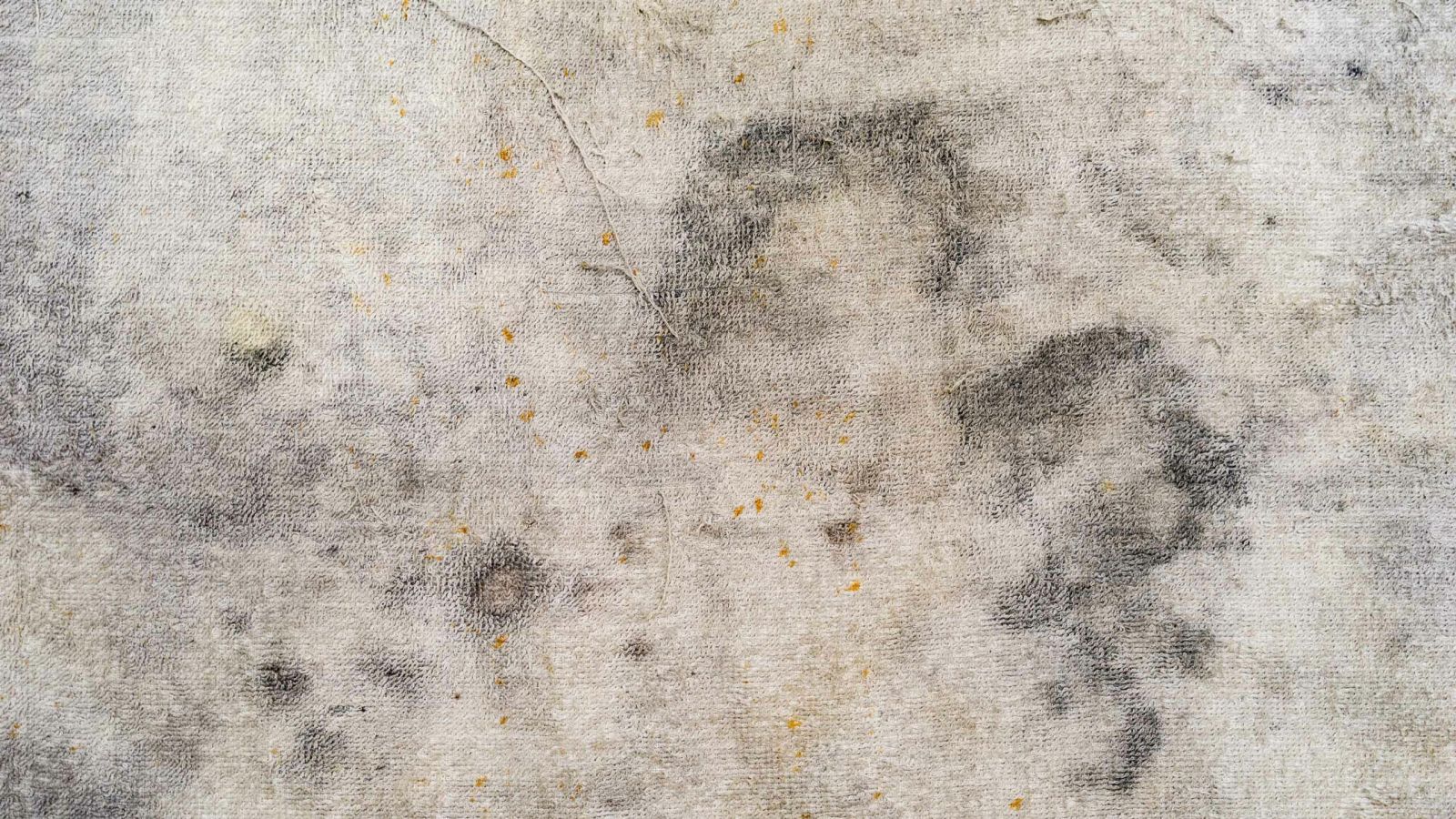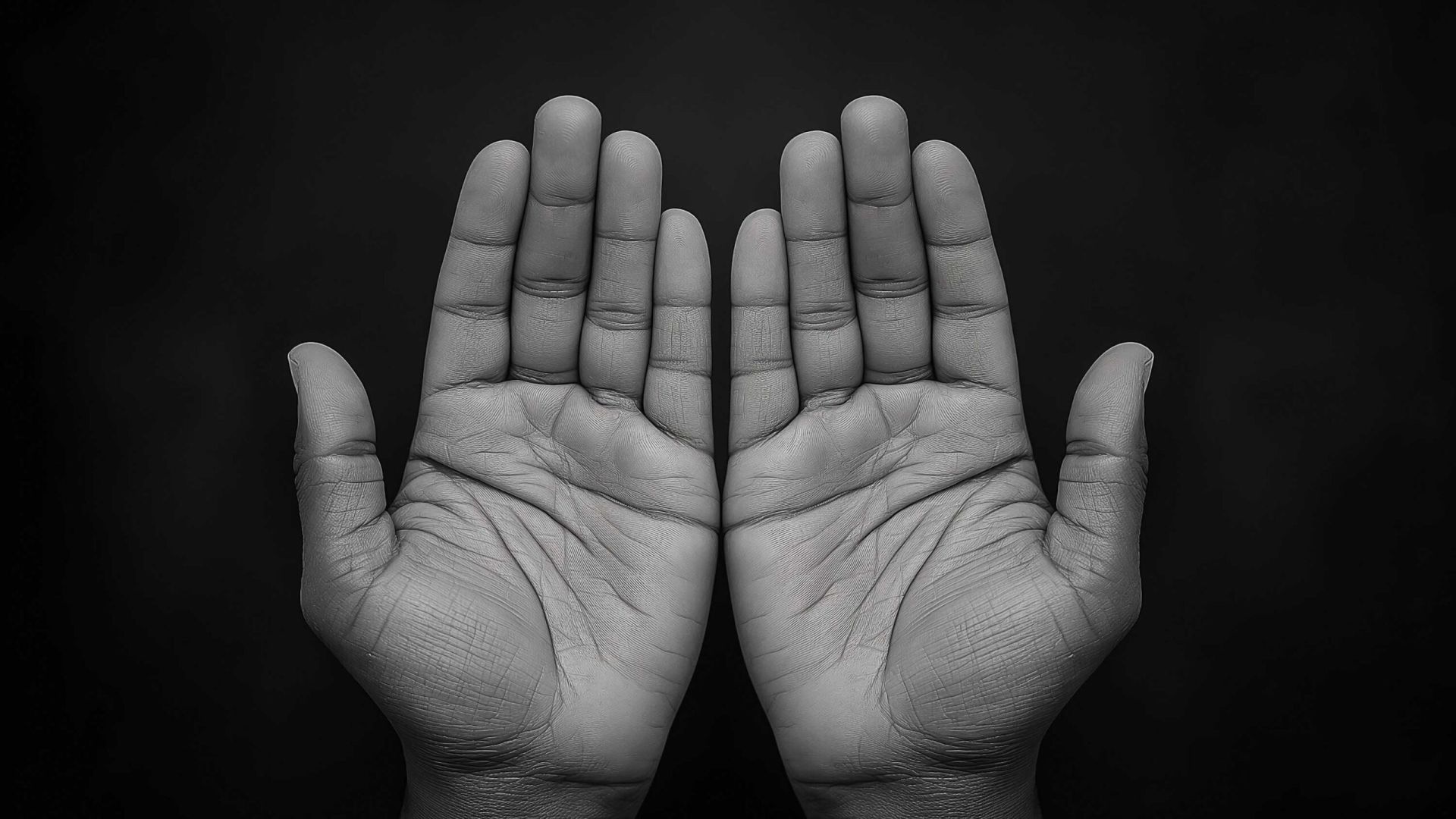Positioning One’s Gaze in Ṣalāh
Imām Muḥammad ibn Ṣāliḥ al-ʿUthaymīn


Looking at the Place of Sujūd
The imām, the one being led, and the one praying by himself, all should look at the place of their sujud while praying. This is the opinion that has been adopted by the majority of scholars as evidenced by the ḥadīth: “The Messenger of Allāh (صلى الله عليه وسلم) used to look at the place of his sujūd when praying”.1 Looking at the place of sujūd during ṣalāh has also been used to interpret the saying of the Most High:
قَدْ أَفْلَحَ الْمُؤْمِنُونَ ﴿١﴾ الَّذِينَ هُمْ فِي صَلَاتِهِمْ خَاشِعُونَ
“Successful indeed are the believers. Those who offer their ṣalāh (prayers) with all solemnity and full submissiveness.”
(Al-Muʾminūn, 23:1-2)
They say that the “solemnity and full submissiveness” in ṣalāh mentioned here refers to looking at the place of sujūd when performing it.
Looking Ahead
Other scholars have adopted the opinion that one should look ahead. Except when sitting for the tashahhud in which he should look at his hand that he points with while invoking Allāh in that position.
Looking at the Imām
While others have elaborated on this issue by differentiating between the imām, the one praying by himself, and those being led. They say: Those being led should look at their imām while praying such that they ensure full emulation of him. For this reason, al-Barāʾ ibn ʿĀzib (رضي الله عنه) said: “When the Messenger of Allāh (صلى الله عليه وسلم) would say ‘سمع الله لمن حمده’, no one would bend their backs until he (صلى الله عليه وسلم) had fully descended for sujūd. Then, we would all perform sujūd after him.” They say: This proves that they used to look at him (صلى الله عليه وسلم) during the ṣalāh. They also evidence the incident that occurred during the kusūf (eclipse) prayer in which the Prophet (صلى الله عليه وسلم) related to his companions that both Paradise and the Fire were presented to him. He (صلى الله عليه وسلم) told them that, when Paradise was presented to him: “You observed me step forward” and that when the Fire was presented to him “I stepped back”.2 This proves that those being led may look at their imām when praying.
In consideration of these opinions, this matter is flexible and people should look at what facilitates the greatest amount of concentration, humility and submissiveness for them. The only exception to the aforementioned applies to the sitting position in which one should look at their finger as they invoke Allāh by pointing with it as narrated in the ḥadīth.3
Exceptional Circumstances: Ṣalāt al-Khawf
Another exception mentioned by the scholars applies to the performing of Ṣalat al-Khawf (prayer in a time of fear or imminent danger) as evidenced by the saying of the Most High:
وَخُذُوا حِذْرَكُمْ
“But take every precaution for yourselves”
(Āl-Nisāʾ, 4:102)
This may also be evidenced by the Prophet (صلى الله عليه وسلم) setting a spy to detect the enemy’s approach on the Day of Ḥunayn. He (صلى الله عليه وسلم) began looking in the direction of al-Shiʿb which was the place of this spy while praying.4 In a circumstance of imminent danger, there is a clear need for a person to look to his right and left while praying. Physical actions—even those that are quite frequent—may be overlooked due to this fear. Movement of one’s gaze may, therefore, likewise be overlooked. This exception is also correct.
Exceptional Circumstances: Praying in Masjid al-Ḥarām
Other scholars have also set an exception that applies to those praying in Masjid al-Ḥarām. They say: It is more befitting for them to look at the Kaʿbah when praying. This is because it represents the qiblah of the praying person.5 However, this opinion is weak because looking at the Kaʿbah will undoubtedly distract a person from his ṣalāh as it preoccupies him with gazing upon the people continuously performing their ṭawāf around it. Therefore, the correct opinion is that Masjid al-Ḥarām is like any other masjid with regards to where the praying person should look while praying. The praying person in Masjid al-Ḥarām should look either at the place of his sujūd or in front of him.
The Ruling on Raising One’s Gaze During Ṣalāh
As for looking upwards towards the sky while praying, this is ḥarām. Rather, it is among the major sins as the Prophet (صلى الله عليه وسلم) forbade this act with severity. He (صلى الله عليه وسلم) said: “They shall indeed cease this—that is, those who raise their gaze upwards while praying—or their eyesight shall be seized from them”6 and in another narration: “or their eyesight shall never be returned to them”.7 This represents a clear threat. Threats are not issued except in reference to a major sin. To the extent that some scholars even say that raising one’s gaze while praying will render that ṣalāh invalid. They evidence this opinion with the following:
- He has turned his face away from the direction of the qiblah which is the Kaʿbah. The Kaʿbah exists at ground level, not in the sky.
- He has perpetrated an impermissible, expressly forbidden act which specifically pertains to the ṣalāh. Such perpetration should stipulate the invalidity of the ṣalāh being performed.
However, the opinion of the majority of scholars is that the ṣalāh of the one who raises his gaze is not invalid. Although, according to the most correct opinion, he is undoubtedly sinful. This is because threats are not issued in relation to acts that are merely disliked.
In summary, the praying person should look either at the place of his sujūd or in front of him in all circumstances except for those that have been excluded, as aforementioned.
[Q]: Is it better for a praying person to look at the place of his sujūd or ahead?
[A]: He should choose that which facilitates a greater amount of humility, submissiveness and concentration during the ṣalāh. The exception to this is in two positions: when faced with imminent danger and when in the sitting position in which he should look at the finger he points with to invoke Allāh as narrated in the Sunnah of the Prophet (صلى الله عليه وسلم).
Among the most surprising aspects of this issue is that those who have adopted the opinion that one should look at the Kaʿbah when praying in Masjid al-Ḥarām justify this stance saying: Gazing upon the Kaʿbah is a form of worship. This reasoning requires evidence. How did we come to the conclusion that merely looking at the Kaʿbah is a form of worship? Any act of worship that is defined without a legislative precedent must be considered an innovation.
The Ruling on Closing One’s Eyes in Ṣalāh
Concerning closing one’s eyes in ṣalāh, the correct opinion is that praying in this manner is disliked. This is because it resembles the manner of worship adopted by the Majūs when they worship fire as they close their eyes while worshipping it. It has also been said: It is a Jewish habit. Seeking to resemble those other than the Muslims should be considered ḥarām at the very least, as stated by Shaykh al-Islām (رحمه الله). Herego, closing one’s eyes in ṣalāh is disliked at the very least except if there is a valid reason to do so. For example, in a circumstance wherein a person is surrounded by distractions such that he closes his eyes to ameliorate the deleterious effects of these stimuli.
[Q]: I, personally, find a greater sense of submissiveness, humility and concentration when I close my eyes during ṣalāh. Would you issue an edict for me to close my eyes when praying?
[A]: No. This is because that claimed sense of humility that you feel from engaging in that which is disliked is actually from Shayṭān. It may be likened to the claimed humility obtained from the various innovated forms of remembrance that the people of Ṣūfīyyah engage in, with which they claim to worship Allāh. It may be that Shayṭān distances himself from your heart when you close your eyes during ṣalāh such that he does not distract you with his whisperings in that state. All the while it is only for the purpose of ensuring that you fall into that which is disliked while you pray. Thus, we say: Open your eyes and try, to the very best of your abilities, to attain humility, submissiveness, and concentration in your ṣalāh. As for arbitrarily closing your eyes without a valid reason for the purpose of attaining this humility, we do not approve because this is from Shayṭān.
Endnotes:
[1] Authentic: narrated by al-Bayhaqī: 9726 and graded authentic by Shaykh al-Albānī in Ṣifat al-Ṣalāh 1:232.
[2] Authentic: narrated by al-Bukhārī: 1052 and Muslim: 904.
[3] Authentic: narrated by Abū Dāwūd: 990 and graded authentic by Shaykh al-Albānī. See Sunan Abī Dāwūd edited by Muḥī al-Dīn ʿAbd al-Ḥamīd.
[4] Authentic: narrated by Abū Dāwūd: 916 and graded authentic by Shaykh al-Albānī. See Sunan Abī Dāwūd edited by Muḥī al-Dīn ʿAbd al-Ḥamīd.
[5] See article: The Responsibility of Determining the Direction of the Qiblah: For the Resident and the Traveller by Imām Muḥammad ibn Ṣāliḥ al-ʿUthaymīn.
[6] Authentic: narrated by al-Bukhārī: 750 and Muslim: 428.
[7] Authentic: narrated by Muslim: 428.
Source: Al-Sharḥ al-Mumtiʿ 3:38-42
Translated by: Riyāḍ al-Kanadī
Most Popular: Last 30 Days

















